Images
- Alessandro Moreschi
- Caffarelli
- Caffarelli, caricature by Pier Leone Ghezzi
- Castrato singer Gaetano Majorano (a.k.a. Caffarelli) carries the Teatro San Grisostomo with him, caricature by Antonio Maria Zanetti
- Gaetano Berenstadt
- From left to right: Berenstadt, Cuzzoni, Senesino
- The choir of the Sistine Chapel, by Ingres
- An opera performance in a baroque theater, possibly Eszterhaza. Austrian School, late 18th Century. Black chalk, watercolor, bodycolor, on vellum. 59.4 x 89.2 cm
- Lully’s Opera Armide Performed at the Palais-Royal 1761, by Gabriel de Saint-Aubin (1724-1780). Pen, watercolor and gouache over graphite pencil on paper 48.3 x 67.3 cm (19 x 26 ½ in.) Museum of Fine Arts, Boston, Gift of Elizabeth Paine Card, in memory of Robert Treat Paine the Second
- A caricature of Farinelli in a female role
- Castrato Nicolo Grimaldi (a.k.a. as Nicolino) performing the role of Marziano together with soprano Lucia Facchinelli (a.k.a. «La Becheretta») singing the title role of Salustia in Giovanni Battista Pergolesi’s opera La Salustia (Teatro San Bartolommeo, Neapel, Winter 1731) , caricature by Anton Maria Zanetti
- Musical feast given by the cardinal de La Rochefoucauld in the Teatro Argentina in Rome in 1747 on the occasion of the marriage of Dauphin, son of Louis XV, by Giovanni Panini
Suggested Readings
- Mario Ajello, L’inchiostro del diavolo, Ponte delle Grazie
- Naomi André, Voicing Gender, Indiana University Press
-
Patrick Barbier, Gli evirati Cantori, Rizzoli
- Nicholas Clapton, Moreschi and the Voice of the Castrato, Haus Books
- Martha Feldman, The Castrato, Reflections on Natures and Kinds, University of California Press
- Lowell Lindgren and Sergio Durante, “La Carriera di Gateano Berenstadt, Contralto Evirato (ca.1690-1735), Rivista Italiana di Musicologia, vol. 19, n. 1 (1984 gennaio-giugno), pp. 36-112
-
Luca Scarlini, Lustrini per il regno dei cieli, Bollati Boringhieri
Music Credits
- Main Theme – Valerio Mirone
- Hostias et Prece – Alessandro Moreschi
- Someone Controls Electric Guitar 2 – Imagho
- Overdrive Melancholic Guitar – Monplaisir
- American Gothic – James Beaudreau
- Crucifixus – Alessandro Moreschi
- Repetition – David Szesztai
- Last Summer Day – Bisou de l’enfant sauvage
- The Great One Step – Victor Dance Orchestra
- Rock Thing – Creo
- Guitare 1 – Monplaisir
- Adios – David Szesztai
- Ambient Guitar Samples II – Aussens@iter
- Kokokur – Pitx
- To Free Me – Ivan Chew
- Blue Wave Theory – George Bullen
Sound Effects
- Fake Vynil – Timbre
- Horse-drawn carriage, Approach and Stop – Sirderf
- mechanic_old_cog_chain_medieval_gate_metal_wood_elevate_open_close – johanwestling
- Printing Press Mechanics – exuberate
Transcription
What you’re hearing now is an uncanny, eerie voice from a distant past. Despite the recording took place in 1904 this voice has echoed throughout the ages. From the festive courts of the Italian Renaissance, through shining theatres, to the austere Chapels of the Vatican. It’s the voice of the castrati, of the very last one of them, Alessandro Moreschi. To be a castrato: this means having both testicles removed in young age in the hope of acquiring a sublime voice. This ancient, almost biblical barbarism was part of an all-Italian musical tradition that flourished between seventeenth and eighteenth century. And yet, while Henry Ford set a new automobile speed record of 147 km/h, while engineers begin work to create the Panama Canal, while the International Alliance of Women was founded, while the world paced into the twentieth century, while all of this was happening, Alessandro Moreschi sang. Out of his time, he sang. His voice slid down the phonograph’s horn and ended up carved on a wax cylinder. There it rested, enshrined like a relic from another era.
But please, don’t be fooled by acoustics, the voice you heard is not just a voice. It belongs to innumerable people. Their voices, so disparate and unique, are now channeled through that one voice. You see, Moreschi’s life is part of a wider story. One story that encompasses multiple stories of different people, from different ages. It certainly is a complicated narrative, full of knots, rich in loose ends, difficult to unravel. But, do not worry, we’ll get to the bottom of this. Please, bear with me, this story comes from Ars Dicendi and today we’re dealing with Italian Culture.
Being the last one of his kind, Alessandro Moreschi took the stage when the castrati’s era was greeting the dusk. His personal life, his career were deeply influenced by the way the contemporary musical world interpreted the castrato voice, its function, its uses. But Moreschi’s beginning was not too different from the childhood of any other castrato from any other time. He was born in 1858 in a small town near Rome. The seventh child of his parents, he grew up in a dramatically underdeveloped country.
According to Moreschi’s account, he used to sing as a boy in a chapel, just outside his hometown. That’s probably where his teacher heard him for the first time. Since the early stages of the castrato era, in the second half of the sixteenth century, wandering teachers used to scout for promising voices both in town and rural areas. Once they found a candidate, they made contact with the family and explained to them that, thanks to a surgical operation, they could set their son for life. Castrato voices were highly regarded in courts and choirs, the job was well paid, the lifestyle more than enjoyable. By giving their consent, parents freed themselves of the economic burden a son represented: the boy would have enrolled at one of the several music schools, where he would have studied until his debut. At that point, his income would have covered for his living expenses and, who knows, he might have also benefited the old parents. For poor, illiterate farmers this was the chance of a lifetime. We don’t fathom how many parents of young, promising voices accepted the deal, we only know that Moreschi’s did.
Like many others before him, he underwent what is called bilateral orchiectomy which, in brief, consists of getting rid of both testicles. It was a dangerous surgery and many children found their end while so-called experts exerted their arts. An entire town, Norcia in the Umbria region, was devoted to such practices. The butchers, or norcini, learned their craft while operating pigs destined to the fattening. Then, they turned their knives on little kids.
Testicles secrete testosterone, the hormone that makes the beard grow and the voice deepens. By removing the major source of testosterone before puberty, normal development is compromised in several ways. For instance, this hormonal deficiency might cause excessive growth of the limbs: as a consequence, some castrati had very long legs and arms that, together with disproportionate ribcages, made them look like scarecrows, as their detractors called them. The castrato’s body also developed female secondary sex characteristics, such as a large breast, fat thighs and belly. Of course, the lack of testosterone inhibits the growth of facial hair. Despite this unpromising introduction, castrati did not develop each one of these features to the maximum degree: they were not freaks and most of them had a pretty bland figure. According to several accounts, in fact, some castrati exerted an androgynous fascination over their public, attracting men and women alike. And they certainly had a sexual life because, despite being sterile, they could still experience sexual attraction and perform sexual acts.
But, in which way did orchieoctomy influence the quality of the voice?
From a physiological standpoint, due to the lack of testosterone production, the larynx remains small, flexible and doesn’t descend in the throat. The vocal cords also stop growing. Bear in mind, though, that each Castrato had his own, unique voice, shaped by daily exercises and influenced by his personal physiology. In general, though, they could all rely on a hybrid vocal instrument. The castrato’s larynx was similar in size and position to a boy’s larynx. The only, significant, difference is that it operated within a fully grown man’s body. On one side a castrato was able to sing in the same range as a woman without turning to falsetto. On the other, he had larger ribcage, nose and mouth that could amplify his voice and enrich the timbre. The interplay between these elements, and many years of practice, gave birth to a powerful, agile vocalism whose sounds were often described as silvery, otherworldly. It doesn’t come as a surprise that castrato voice was somehow conceived as a third voice, both manly and feminine. This idea of a third voice could be connected to the way people perceived sex and gender back in the days. Male and female were considered to be two poles of the same sex instead of being two different sexes. Women could then oscillate towards the male polarity to interpret male, heroic characters – dressed as members of the opposite sex, as often happened in Baroque Opera. The same was valid for the castrato’s voice, which occupied a third, middle-place between these two poles. Naomi Andre, who’s a musicologist and a professor at the University of Michigan, expands on the matter.
It’s very difficult for us to imagine how a castrato voice would sound even if we have a few recordings left of Alessandro Moreschi singing solo and in a choir. These old recordings, while being an astounding window to a time past, are not entirely reliable when it comes to reproducing Moreschi’s voice. Besides the hiss you can hear in the background, these early recordings could capture only a segment of his voice’s resonance. The difference sounds more or less like this. As you can clearly notice, my voice sounds different after I cut out all the frequencies above 2100 Hertz. That’s roughly what happened to Moreschi’s voice as it was recorded on the wax cylinders. The problem is, you see, while speech is not entirely compromised by this frequency ceiling, higher ranges are especially important to male singers. They represent the best, sweetest part of the singing voice and, by removing them, we are left with a partial recording of what a castrato voice used to sound.
Nevertheless, the Moreschi’s recordings still shed light on his proficiency in singing.
We left the young Moreschi in the hands of his new teacher: what happened to him afterward? First, he moved to Rome, the only city where a castrato singer could receive instruction and find work in 1871. He was enrolled at the choir-school run by the De La Salle Brothers. Two years later, his teacher appointed him primo soprano at St John Lateran. Moreschi also performed in other chapels and choirs until, in March 1883, he was eventually admitted to the Sistine Chapel Choir. The members of this revered institution have sung in the Pope private chapel since the sixteenth century. The clergy was so keen on this kind of sacred music that – due to its unwavering demand for white, trained voices – the castrato singer became a traditional figure in Baroque music and beyond.
However, the Catholic Church has always adopted an ambivalent position in regards to castrati, to say the least. On the one hand, they somehow needed them. Women could not appear on stage because according to st. Paul, singing and performing, in general, was associated with prostitution. This left an open spot in church choirs and theatrical productions that could only be filled by high pitched voices with years of training: hence, the castrati’s diffusion. On the other hand, canon law did not permit bodily mutilations: transgressors risked a great deal while operating on a scrotum. That’s the reason why castration was largely clandestine. But, again, the authorities run with the hare and hunted with the hounds: legislators introduced a series of attenuating circumstances to make castration at least vaguely acceptable from a legal standpoint. For instance, orchiectomy was tolerable if the boy asked for it in order to devote his life to God’s glory. In some cases, like in Moreschi’s, castration was admitted as a therapeutic treatment for alleged physical malformations. That’s why you find a plethora of made-up stories about farm-life accidents and wild beasts assaulting kid’s gonads that forced the parents to save their son by having him castrated. This sanctimonious atmosphere helped the industry thrive under the nose of the Pope: it’s noteworthy that over 40% of the most celebrated castrati from the eighteenth and nineteenth century were born in the Vatican state. This bloody musical tradition lasted for centuries. In 1883, when Alessandro Moreschi joined the Sistine Chapel choir, six other castrati still sang in the ensemble. The situation, though, was bound to change quickly.
By the end of the nineteenth century, castrati sang mostly in church choirs, aristocratic salons or, in some exceptional cases, they were hired to perform during public celebrations. Moreschi, for instance, was one of the most talented castrati of his time and usually performed in front of a rather small audience.
Despite his prominence in the Roman musical landscape, Moreschi’s most stable source of income was his job at the Sistine Chapel choir, whose hierarchy he was able to ascend thanks to his superior voice. But even inside one of the most conservative organizations in the world, changes happen.
Right when Moreschi was establishing himself as one of the leading voices in the Sistine Chapel choir, the cecilianists started to become more and more popular on the liturgical music scene. The cecilian movement promoted a reform that aimed to bring church music back to its roots – that is Gregorian chants and polyphony from the Renaissance. This means that sacred music should have refrained from imitating contemporary secular music, thus eliminating the theatrical effects and the emotional nuance from the liturgy. So, no more drums, nor trumpets, nor harps and especially – no more virtuoso singers who interrupted the mass with never-ending trills. With hindsight, it was clear that the end of the castrati tradition was rapidly approaching. In 1902 the new master of the choir managed to forbid further recruitment of castrati.
Moreschi took his leave in 1913 when, at the end of his 30-years contract with the Sistine Chapel, he qualified for his pension. He left the stage and walked away. With him, a fascinating group of singers, actors and performers disappeared… But before the curtain falls on the castrati, we will ask them to stay a bit longer. This fascinating lot has yet plenty of stories to tell.
Once upon a time, in a land not too far away, there was the son of a farmer who loved to sing and, despite his humble origins, was destined to become a prince. Not too charming though. It’s 1710 and the young Gaetano Majorano is leaving his hometown in Puglia and heading to Norcia. There, accompanied by his teacher Caffaro, he will take the first step towards a life full of glory, success and misery. The boy will be so grateful to his teacher that, at the right time, he will adopt the stage-name of Caffarelli. People may not know this name now, but back in the day everybody loved and hated that young, passionate castrato who took the stages by storm, constantly balancing between excesses and melancholia. With all of his whims and skills, Caffarelli can truly be considered the symbol of the golden age of castrati.
He was so good that his first teacher, Caffaro, recognized that his teaching expertise couldn’t match the young boy’s abilities. He then entrusted his pupil’s custody to Nicola Porpora, teacher extraordinaire. Farinelli, Salimbeni and many other famous castrati stars have studied under Nicola Porpora, who was considered the leading singing teacher during the Baroque era. Nicholas Clapton describes what an apprentice singer, be it castrato or not, was required to learn before the debut.
Cafferelli was a quick learner and, in 1726, he debuted under the stage-name of Caffarellino, that is “little Caffarelli”: he was just 15 years old.
Different times, different customs: unlike Moreschi, who lived in the twentieth century, Caffarelli performed in theaters, in front of a vast public. The seventeenth century saw the rise of a new musical format, the Opera, that happened to be an excellent showcase for the qualities of castrato singers. Tragic stories, for instance, were perfect to express a certain kind of emotional lyrism, which castrati mastered since a very young age. Malleability in plot and timing also helped to accommodate one or more displays of virtuosity in the same play, if needed. It’s safe to claim that castrati’s outstanding voices were so powerful and rich, that they somehow influenced the development of the Opera format.
In past times, Opera was quite a grandiose experience. Plays were extremely expensive because, besides the singers’ fee, producers had to pay for trained horses and elephants to be shown on stage, together with hundreds of fully equipped extras. The opening night of the Hipermestra at the Pergola theater in Florence, ninety-four horse-riders battled on stage. Now you get the scale of the operation and how and why people were completely ravished by this kind of show.
Even the way the public experiences Opera has changed over the centuries. In the baroque era, you weren’t necessarily supposed to be seated and still while listening to music. It was considered rather normal to get up, have a chat with other spectators, even with the singer on stage if he wasn’t busy singing the current aria. Caffarelli, for instance, was renown for behaving quite eccentrically while he was on the stage: to be more precise, he acted like he was in his own private quarters. So, you might have found him quarreling with the public, with his fellow singers and sometimes with the whole orchestra. Once, he got bored during a recitative and started to sniff a pinch of snuff while chatting with a lady sitting in a loge.
While not endorsed by professionals, this kind of behavior was acceptable at the time because Opera was also perceived as a social experience. An Opera night reflected the old social customs: aristocrats, for instance, partied in loges they customized adding furniture and various amenities. They used to play cards during unimportant recitatives while providing refreshments to their visiting friends. It was like they were right at home.
It’s fascinating how much Opera changed in the span of a few centuries. If you’re interested in a more complete account on the matter, please check our site: italianculturepodcast.com. There you’ll find a list of suggested reading that will give you a deeper understanding of how producing, writing, performing and experiencing Opera were deeply related. So it seems that, at least from this standpoint, things have not changed much because, like nowadays, producers tried to mediate between what the public wanted and what the show could and should offer. According to several accounts, the public asked for more space to be given to castrati: they were considered to be the main attraction and, as such, they needed more room to show off their skills. So composers modified and created plays anew to accommodate the requests coming from the auditorium. For instance, they wrote numerous arias made of trills and tweeting because chirping birds were considered models of virtuoso singing. Singers also had the chance to add their own aria di baule to the play. The arie di baule, or suitcase arias, was considered the singer’s business card, something that they used to introduce themselves. These quote-unquote best hits were used to show off the singer’s skills if and when the play at issue was considered too bland, even if these arias had nothing to do with the play they were performing at the moment.
In the end, the unique qualities of the castrati influenced the shape of the Opera format. In a musical world where dominance was asserted through the ability to articulate emotionally charged and technically demanding vocalisms, castrati were kings. And as kings, they were beloved and mocked. Naomi André:
There’s an immense amount of literature ridiculing castrati: pamphlet and satires had easy life targeting people whose profile lingered in what the morality of the time perceived as a gray area. Divas, peacocks, turbulent and capricious: castrati were depicted as caricatures of professional singers, always demanding for a silly, grand entrance, always bargaining for richer fees. And, to be honest, if someone ever embodied this cliché, he was Caffarelli. Often behaving like a spoiled child, he denied unleashing his voice until the public prayed him enough. If for some reason, he did not like his fellow performers, he just refused to sing along with them. On a whim, he could also start to play the echo to the other singers’ parts, just to ridicule them in front of the audience. Despite Caffarelli’s efforts to corroborate the image of the silly, capricious castrato, this stereotype just exemplifies how society both embraced and rejected these singers.
The public welcomed them as the stars of the baroque musical world. Commoners filled the streets to pay them homage as soon as they recognized their darlings hiding in the carriages. Waves of public hysteria were quite common after and before concerts. Masses of people guarded the secondary entrances of theaters and venues in order to catch castrati who were sneaking in before a concert. The same happened at the end of the performance, when overexcited fans gathered in a menacing phalanx, pushing to touch and kiss the singers.
The aristocracy was even warmer when dealing with these peculiar artists. Being capable of performing sexual activities without unwanted consequences, castrati were sometimes the perfect companion for adventurous mesdames: Italian noblewomen, in particular, seemed quite fond of these boyish creatures, whose sensual voices opened the gates of heaven. It is well known, for instance, that Caffarelli spent one night in a well, hiding from the husband of one of his mistresses. Then he spent one month in bed, recovering from the bad flu he caught while waiting in the bowels of the land. Then he had to leave town, because the more-than-suspicious husband had him attacked by some thugs, while the wife was paying for his bodyguards.
Castrati’s life was, in some cases, quite glamorous. This may have stimulated the fantasy of the pamphleteers who prudishly condemned castrati for setting a bad example by softening the boundaries between the sexes. What these critics failed to notice, though, is that castrati’s workspace turned around transvestitism and ambiguity. For instance, they were always supposed to wear costumes on stage; often they were also required to play female roles. Furthermore, most Opera seasons coincided with Carnival, a festive season during which it was allowed to wear masks in public. Actually, the whole idea of Carnival consisted in behaving like somebody else, while the standard social structures were momentarily subverted.
So, Castrati mostly worked during Carnival and Opera season. But Carnival is once a year, while Opera seasons start and end at determinate times. This means that opera singers were mostly seasonal workers who had a peak in workload during very specific times of the year. That’s why castrati used to expand their activities by touring Europe in order to bring their talents wherever they were needed. They spent most of the year chasing Opera’s seasons in different towns or trying to reach their next patron’s court. Several castrati have indeed been guests of royalties and noble families all across Europe, commanding vast fees and amassing large fortunes. Caffarelli was certainly one of those first-rate singers and there’s no lack of anecdotes concerning his touring life. We know that he once had a splendid time in Versailles, where he was invited by King Louis XV. There, Caffarelli lived at the expenses of the king in a furnished flat, served by royal staff. Usually, patrons offered gifts instead of money, so one day the king sent Caffarelli a golden snuffbox, a very precious piece of jewelry. After receiving the gift, the castrato threw one of his legendary tantrums. He grabbed the envoy and dragged him into his bedroom. There he showed him a large collection of snuffboxes. He then had the nerves to send the gift back, claiming that he had so many precious snuffboxes that he had no use for the King’s gift. At this point, the envoy tried to explain that this kind of snuffbox was a gift usually destined to high profile guests, like foreign dignitaries and ambassadors. Caffarelli simply replied: “let the ambassador sing, then”.
Besides the anecdotal value, this story tells us that, in some cases, castrati singers were able to achieve immense success. Paid ten times more than the best composers, castrati were able to attract large numbers of people, thus deciding the success of any play. Such power was worth a fortune. So, it’s no surprise that in his late years, Caffarelli invested his life savings in a few, costly ventures: firstly, he bought himself a dukedom, he, who was the son of a farmer. Then he purchased lands and took up residence in Naples, where he had his palace built just like any other nobleman. His welfare was mythical at that point. And perhaps, that’s why the inscription on the façade of his palace compared him, who built that house, to the legendary Amphion, founder of Thebe. In his Thebe, Caffarelli retired more than fifty, and lived until death.
After a career spent in the most glamorous babel, many castrati left this world quietly, without pump and clamor. More importantly, they faded away as kings without any evident heir. What was their legacy, then? Was the price they paid too high in the end?
It’s easy to understand castration as a form of sacrifice.
On one plate we have the prize, which is what is gained through sacrifice: a splendid voice, the chance to be famous and beloved, the promise of comforts and luxuries. In some cases, being a castrato meant to have a privileged connection with the sphere of what is sacred, of what is divine. That is clearly due to the involvement of the Catholic Church in the castrato emergence: for instance, according to religious customs, for castration to be tolerable, the boy had to accept the surgery ad dei gloriam, that is for the glory of God. The castrato established a closer connection to God via his sacrifice: in some sense, he became god-like, as implied by anyone who compared castrati’s voices to the chants of angels. But how much did he pay for that?
Let’s leave aside the confusion they must have experienced while reaching adulthood without passing through puberty, unlike their peers. We shall not take into account the fact that they were practically estranged from their families – an option that many regarded as quite desirable, considering the times and the circumstances. Let’s look at the adult life of castrati: how did they fare? They lived inside a patriarchal and patrilinear society that both cheered and despised them: hurrah for the knife! – that’s what the public shouted after a castrato showed off his skills on stage. This ambivalence reflected how the baroque society saw them, their gender, their possibilities. Castrati weren’t perceived as women, despite the frequent innuendos about their homosexuality. At the same time, it was difficult to treat them as men because of their lack of fertility, a property that was, and sometimes still is, perceived as connected to the attribute of virility. They weren’t men, nor women; they weren’t commoner nor aristocrats; they were admired yet despised. They lived in a society that didn’t see their identity in a clear way and, therefore, couldn’t pinpoint their position within the grid of relations that defines society itself. They could not marry a woman, but they weren’t allowed to love other men. Castrati couldn’t father children but they behaved as manly, powerful figures. So, how did castrati cope with this ambivalence? More importantly, what kind of relationship castrati could fruitfully develop?
It seems, then, that in the end, these peculiar figures managed to forge a set of social bonds within and against the Baroque society, thus bypassing the issue of infertility. Their loved ones survived them and became the heirs of their material legacy. Nevertheless, as often happens, fortunes went lost, palaces crumbled and memories faded. What about the spiritual legacy of a castrato, then? We could say that, as long as we hear the feeble recording of Moreschi singing, the castrato’s legacy is in some way bound to this voice, his voice, their voices… In rare cases, though, the legacy is elsewhere hidden.
A castrato was more than his voice. We tend to forget that, while we deal with the historical phenomenon. We forget the human and focus on the humankind. This is normal, even necessary, because synthesis is vital to history. By shifting our perspective, a series of unrelated, private events transform into a wider, more universal narration. But since we’re dealing with stories within the history, we will take the liberty to look into finer details, to show that, at least in one case, the castrato was more than his voice. Because one of these performers didn’t waltz into the hall of fame warbling and trilling. According to several accounts, in fact, his voice was quite average.
His name was Gaetano Berenstadt: very Italian name, very German surname. Berenstadt was born in Florence twenty years before Caffarelli, in 1690. His father, a timpanist from Germany, worked at the court of the Grand duke of Tuscany. He probably taught Gaetano the basics of music after the young boy showed a promising voice. Then, the surgery. After that, the young Berenstadt probably trained in one of the Neapolitan conservatories that served as music school and Catholic orphanage. Lessons could get quite messy there.
Despite all his efforts, despite the mutilation he underwent, Berenstadt never acquired an outstanding voice, something that made his performances unforgettable. Like many others, he lacked the skills that make a castrato star. Several factors lead us to believe so. For starters, after he debuted, he took a three years leave before taking the stage for the second time: he probably prolonged his formation outside the conservatory, whose studies he has already achieved. Besides some bad-to-mild reviews, it’s easy to acknowledge that Berenstadt has never been a virtuoso. For instance, he sang his aria di baule only twice in his career, and both times performed the same aria. Moreover, he was often destined to second-tier roles. He usually interpreted antagonists – tyrants and evil masterminds who never enjoyed some solo time on stage. In accordance with the role he played, he showcased a powerful, menacing voice more than an agile, tender one. His timbre matched his physicality, as you’ll find by looking at some pictures of him we published on our site: italianculturepodcast.com. Take the caricature. You’ll notice his towering presence, his long legs and wide chest. Despite this being a deliberate exaggeration of his physical features, it reveals the truth: Berenstadt was indeed one of those unfortunate castrati who encountered a disproportionate growth of the legs. That, together with his sturdy build and refined acting skills, made him the perfect fit for the antagonist. Not a star, sure – but still a reliable professional in the Opera scene, Berenstadt shared the stage with castrati celebrities the likes of Senesino or Caffarelli and worked alongside the most renowned Opera composers. Some of them, even modified their plays in order to match plot and characters to Berenstadt’s presence and voice.
Always chasing new productions, he spent most of his life touring Europe: Rome, Naples, Florence, Paris, Dusseldorf, London – Berendstadt had quite an adventurous career. He crossed national borders on a monthly basis and frequently changed his residence; he spent most of his time hanging out with rich people, who often had exotic tastes and needs. He soon realized that this wandering life of his could have been the perfect cover for any kind of illicit activity. Gaetano Berenstadt, on his part, chose to become a smuggler of forbidden books.
He probably developed his taste for rare books quite early in life. We find a trace of this interest in a few letters dating back to 1718 in which he deals with fine book collectors and their habits. Apparently, several book merchants from abroad scoured Italy in search of rarities. Berenstadt considered this to be a territorial invasion since the way these merchants handled books and sellers disrupted the market and made his hobby more expensive. This so-called hobby quickly became a job: besides the pleasure Berenstadt took in collecting rare books, the lucrative side of the business supported the fluctuating income he received as a singer. At the end of his life, Berenstadt was a name in the book-finding business: he developed a fine nose for fine, high priced editions that drew a special kind of clientele: intellectuals, aristocrats and wealthy artists – that was his public, the people who inhabited the salons he frequented as singer. If he could sing for them, he could also hunt books for them. And if books in general were expensive at the time, rare books were extremely expensive; forbidden books, well, they were insanely expensive.
Index librorum prohibitorum – the list of Prohibited Books. The Index, redacted by one specific branch of the Catholic Church, was promulgated multiple times in the centuries; the last one appeared in 1948. If your works ended up in that Index, then you were deemed heretical and any good Christian should have abstained from reading your tome, from spreading your ideas. Many famous scientists, intellectuals and philosophers joined this merry band of heretics; they were condemned, arrested and sometimes put to death by the Church. Generally, it only took to be an innovator in your field to have your name printed on the Index. And creative minds have always fascinated fervent readers – Berenstadt knew that. So, he built a web of informers who helped him track down prohibited books. Eventually, he went one step further. He chose to publish some heresies on paper.
One day, two days, three days, he’s always there, bent over the old manuscript. The august halls of the Laurentian library in Florence are full of murmurs because there’s a man who’s copying a book, not a common one though. “An improper volume” someone said, “written by a savage, a madman” another adds. The copyist is Gaetano Berenstadt, obviously. He picked the sole and only copy of the most licentious work because, he wrote, “it would be nice to save a great book from the oblivion and shove it into the face of those who hate it”. In his hands, he holds La Vita, The life, by Benvenuto Cellini. It’s an autobiography, handwritten in the sixteenth century by an artist, a jeweler and master of the coin of the Vatican State. Well, he was more than that. Cellini was a bit of a hothead. The book is a hymn to his bravado: he quarreled, he fought, he killed by the sword and with his bare hands. According to him, he also participated in a witches sabbath held by a necromancer in the Coliseum, flooded by dancing demons. He fought for the pope during the sack of Rome but, a few years later, he managed to get himself imprisoned in Castel sant’Angelo, that is a papal prison; then he evaded, and so his story goes on and on. La vita was a good, informative reading – it still is. And Gaetano Berenstadt now has it in his pockets.
Next stop: London. Berenstadt and his associates are examining the copy he dug out of the shelves of the Laurentian library. It’s good stuff, they all agree, we can publish it. Excellent, someone says, who’s going to be the printer? I know a trustworthy professional, someone answers – there’s only one problem. It’s a bit far from here, his presses are in Naples… Aaand Berenstadt is on his way again. The castrato’s carriage is now crossing France, all around him are hills and woods. And guards. But he wouldn’t have survived to become a professional smuggler if he didn’t know one trick or two. Another coach is riding the same road he’s on, just a few miles ahead. A couple of expendable associates are quietly sitting inside of it, leaning on the backrest. The wooden plank jiggles a little because behind it some very scrupulous guard may find a hidden compartment. Inside the false bottom hides the Vita by Cellini. But even if the guards had found the book, Berestandt wouldn’t have risked a thing. He would have seen the carriage searched by the guards from afar, just passing by on his own coach while his associates walked towards years of hard labour.
Back to reality though, because none of this happened. Traversing France was easy, uneventful. Now comes the hard part: crossing the Alps. Customs guards are always watching the passes, so it’s impossible to cross the border on a carriage without passing through careful inspection. But, again, Berenstadt is resourceful and knows just the right man for the job. The book is now in the hands of professional passeurs – smugglers who cross the Alps on foot, following hidden trails and taking secret shortcuts. They meet again in Piedmont, where Berenstadt re-acquires the book and sprints to Naples. There, a gate opens and black stained hands finally receive the book. No words exchanged: La Vita by Cellini runs towards the press, while Berenstadt flies to the Viceroy’s ball. As soon as the book is published, the church deems it heretical. But it’s too late, the tome is out there. It’s still there, centuries later, the legacy of a castrato who, as any castrato, was a human being before and besides being a singer.
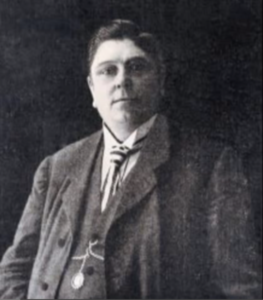



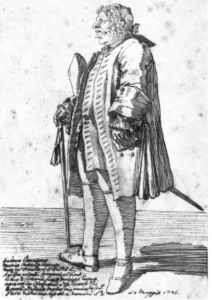


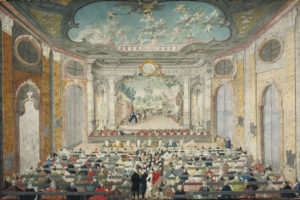
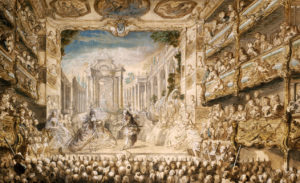
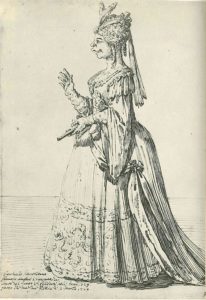
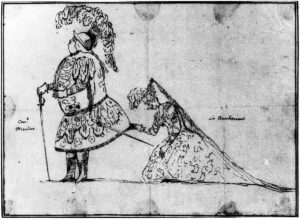
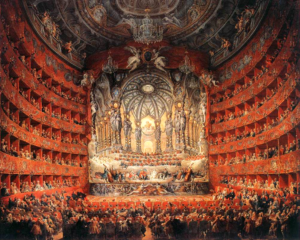

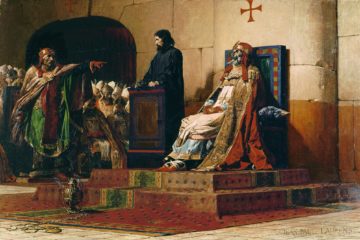

0 Comments